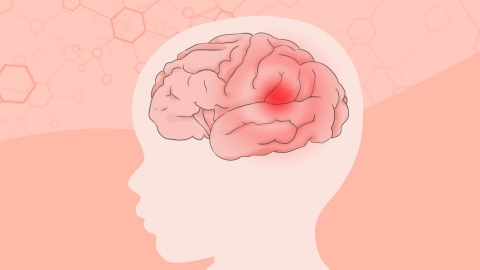What are the causes of speech impairment in patients with cerebral thrombosis?
Generally, patients with cerebral thrombosis may experience speech difficulties due to ischemic injury to the language center, blocked neural conduction pathways, brain tissue edema and compression, restricted movement of articulatory organs, or concurrent cerebral vasospasm. It is recommended to seek timely medical attention, identify the underlying cause, and undergo symptomatic treatment under a doctor's guidance. Detailed explanations are as follows:

1. Ischemic injury to the language center: Cerebral thrombosis blocks blood vessels supplying the language center, leading to ischemia and necrosis of brain tissue and impairing the abilities of speech production and comprehension, manifesting as slurred speech and difficulty expressing thoughts. Early initiation of speech rehabilitation training is recommended, including articulation exercises, repetition of short sentences, and acupuncture stimulation of language-related acupoints.
2. Blocked neural conduction pathways: Thrombosis interrupts neural connections between the language center and other brain regions, causing disrupted signal transmission and resulting in speech difficulties, often accompanied by impaired limb movement. Under a doctor's guidance, limb function training should be combined with speech therapy, such as picture description and sentence repetition, to promote neural pathway reconstruction.
3. Brain tissue edema and compression: Localized brain edema following thrombus formation enlarges the lesion and compresses the language function area, worsening speech impairment, and may be accompanied by headache and vomiting. Strict bed rest is required, with avoidance of emotional agitation. Follow medical advice to use medications such as mannitol injection, glycerol fructose injection, and furosemide injection to reduce edema, thus creating favorable conditions for neurological recovery.
4. Restricted movement of articulatory organs: Cerebral thrombosis may affect nerves controlling the lips and tongue, causing reduced articulatory flexibility and resulting in speech difficulties along with drooling. Oral motor exercises such as puffing cheeks, extending the tongue, and whistling should be performed to improve articulatory coordination, combined with electrical stimulation therapy to promote muscle function recovery.
5. Concurrent cerebral vasospasm: Persistent cerebral vasospasm following cerebral thrombosis exacerbates cerebral ischemia, affecting blood supply to the language areas and causing recurrent speech difficulties. Patients should follow medical advice to use medications such as nimodipine tablets, fasudil hydrochloride injection, and ginkgo biloba extract injection to relieve vasospasm and improve cerebral blood supply. Cerebral vascular interventional procedures may be necessary to expand blood vessels and restore blood flow.
Family members should provide a quiet communication environment for the patient, encouraging gradual speech practice starting from single characters and words to progressively enhance language ability. Additionally, maintain a light diet and consume more protein- and vitamin-rich foods such as eggs and vegetables to support nerve tissue repair.







